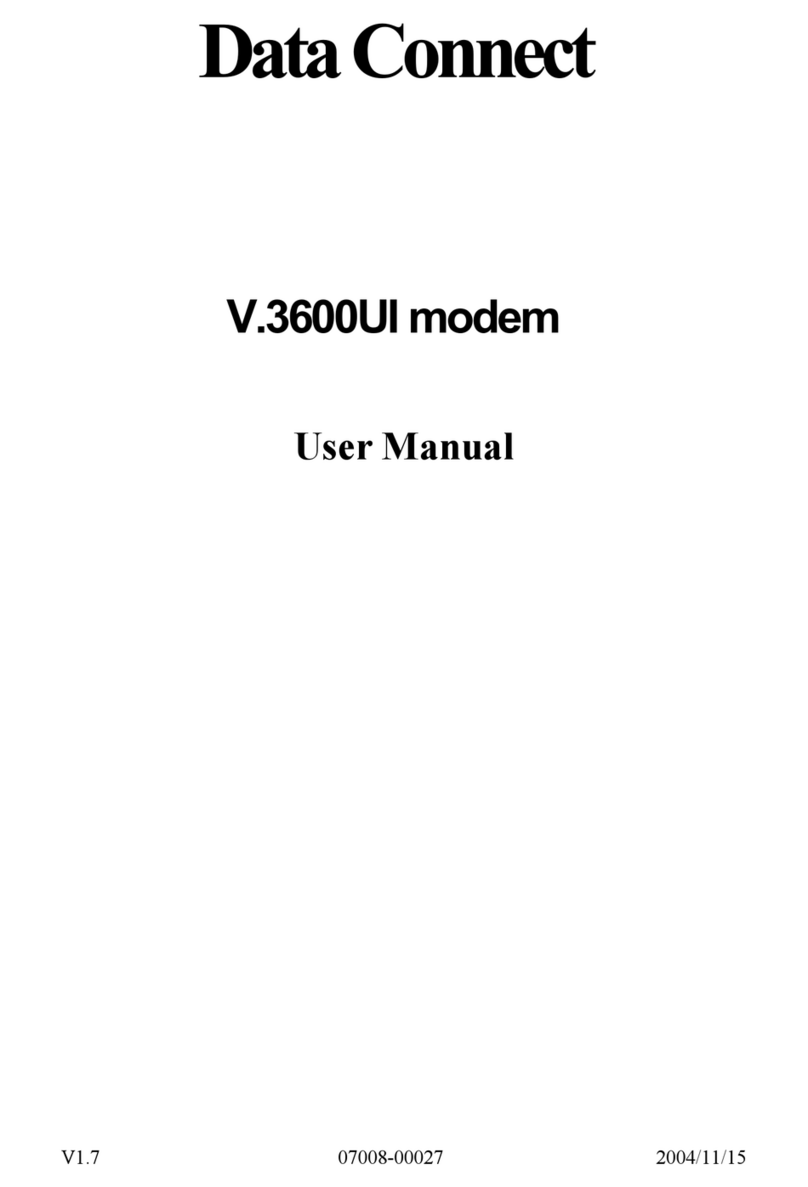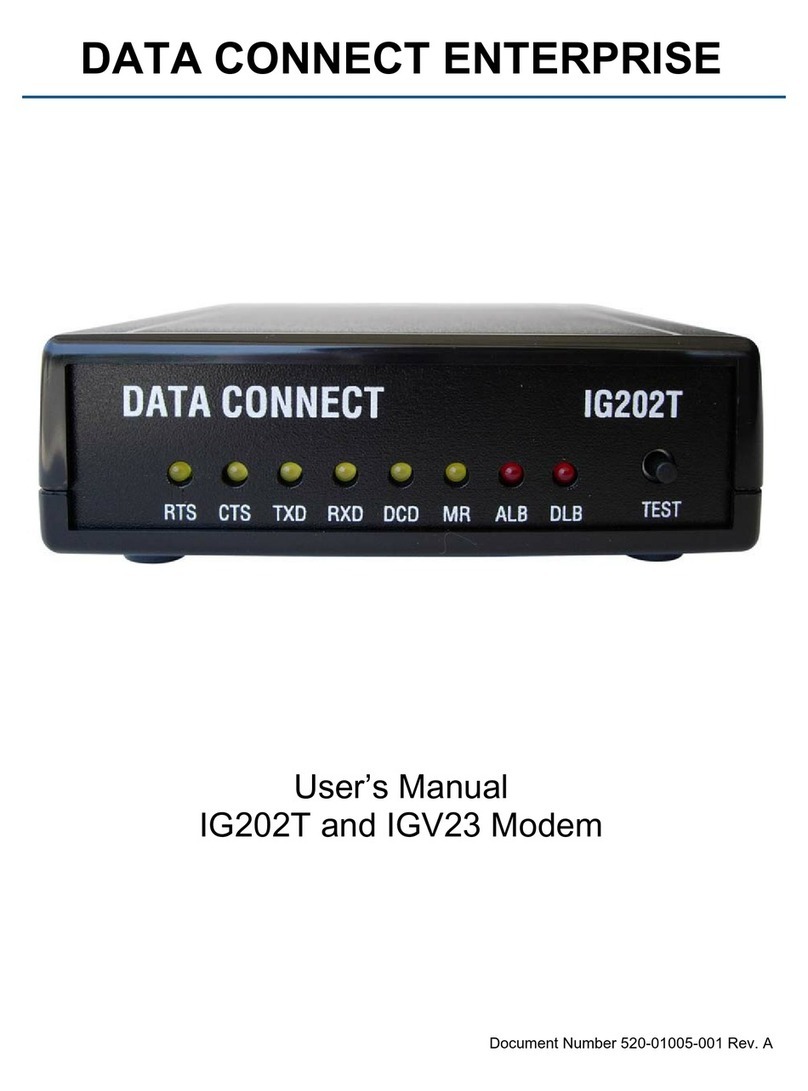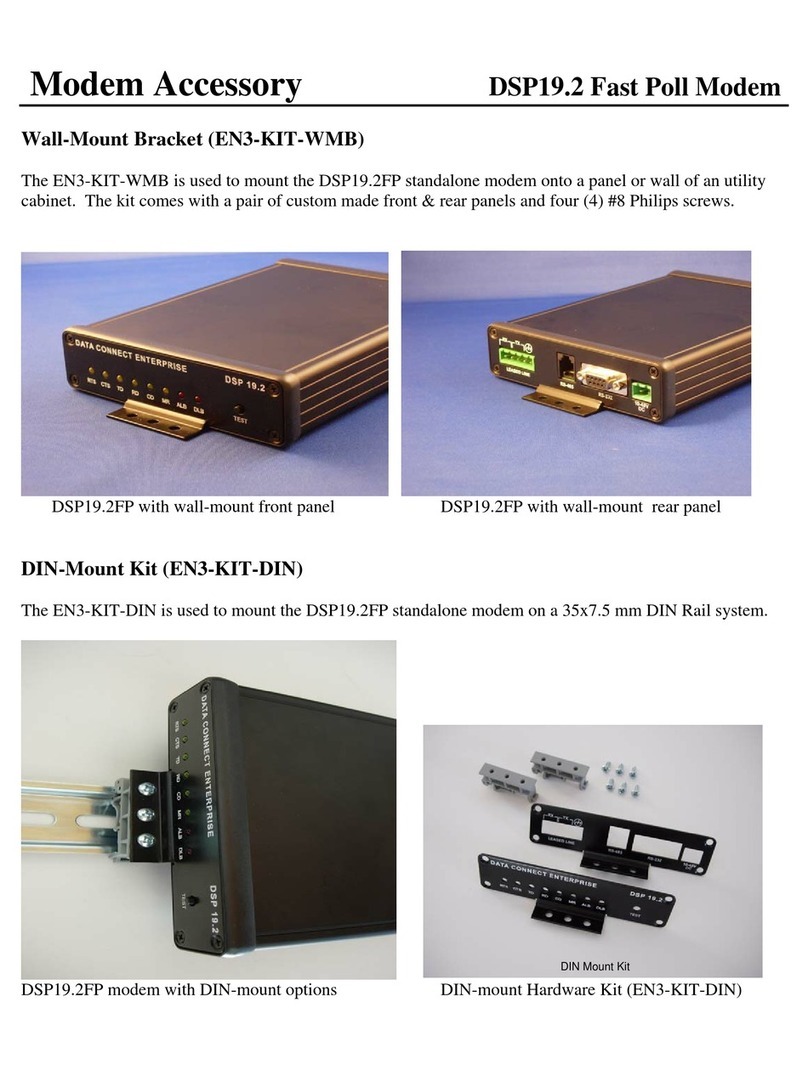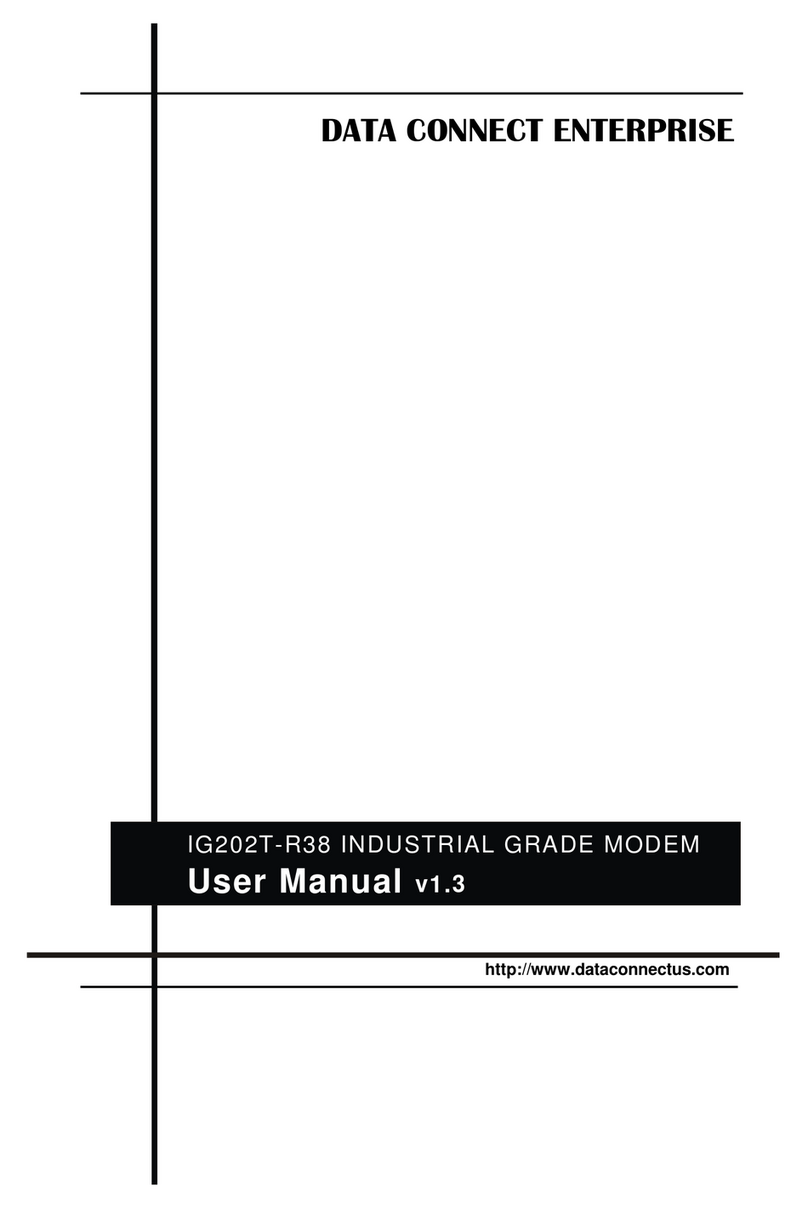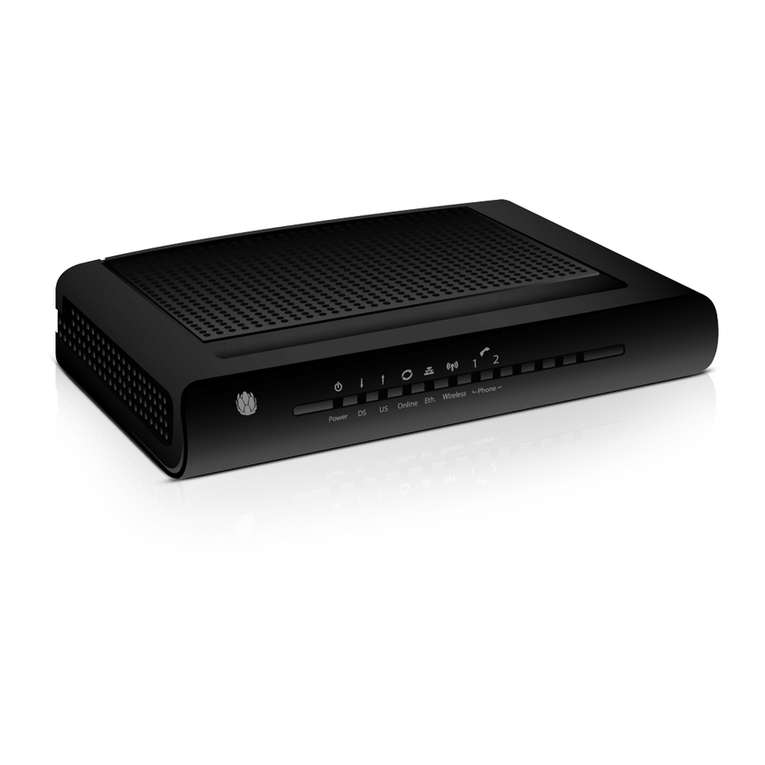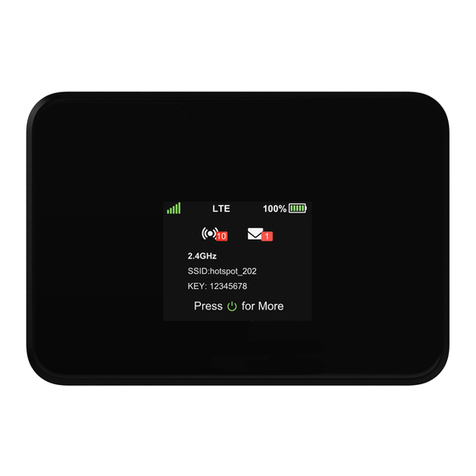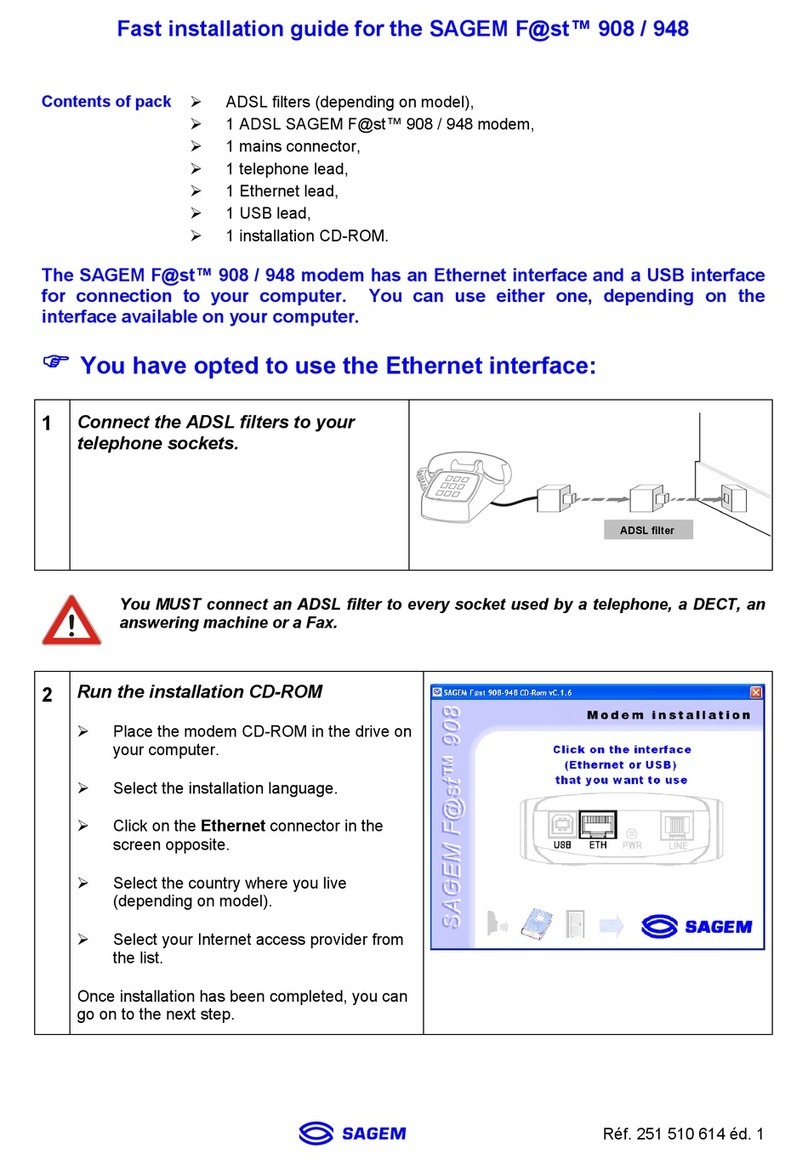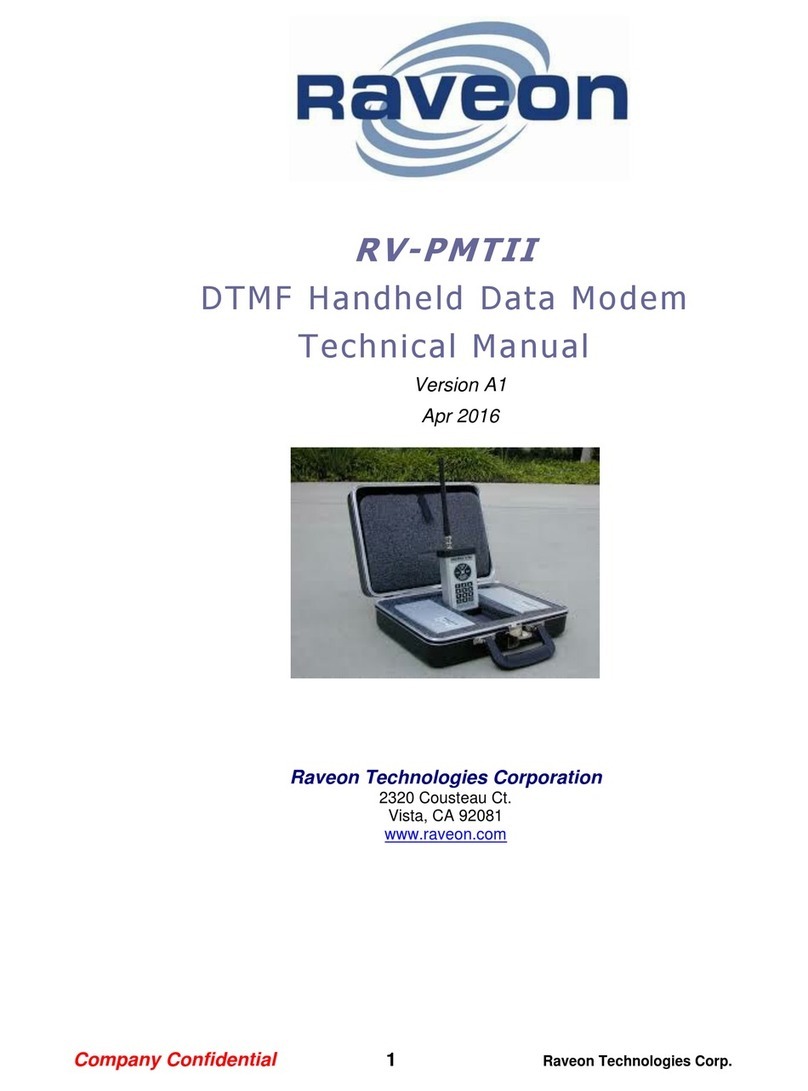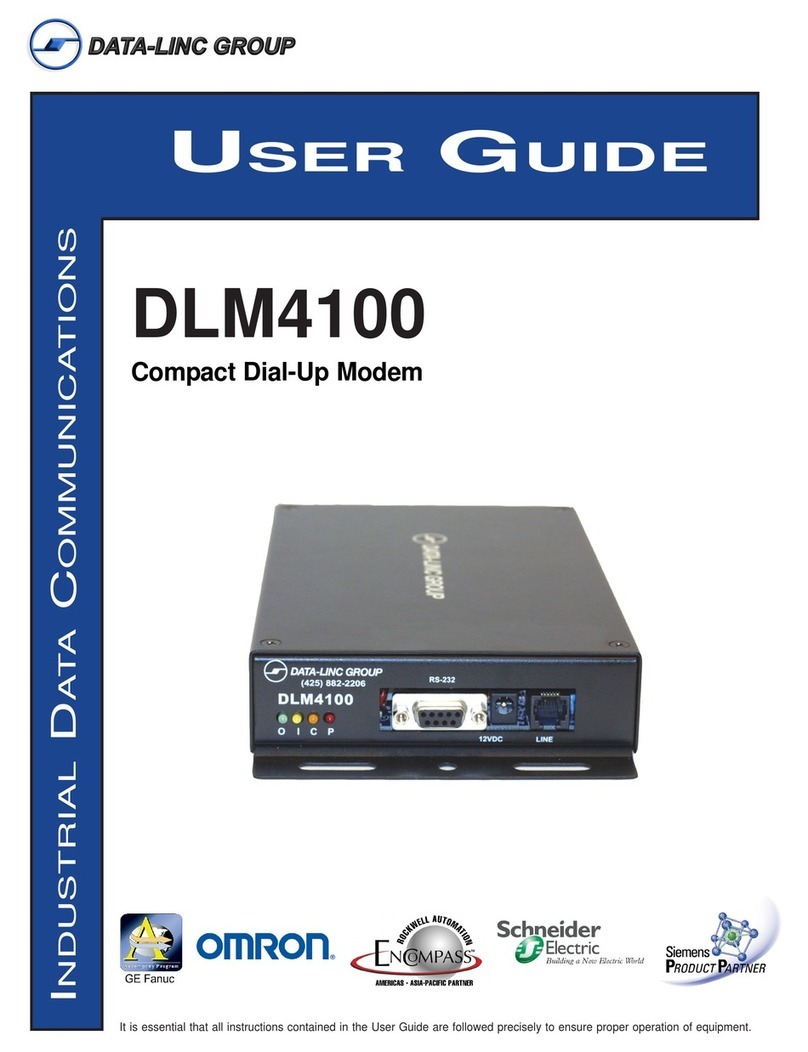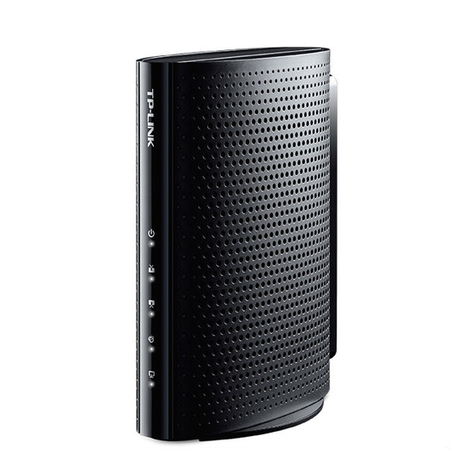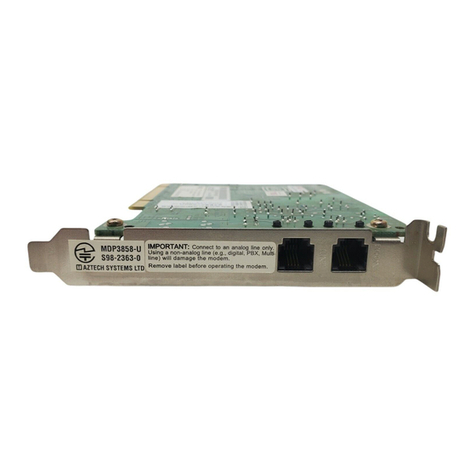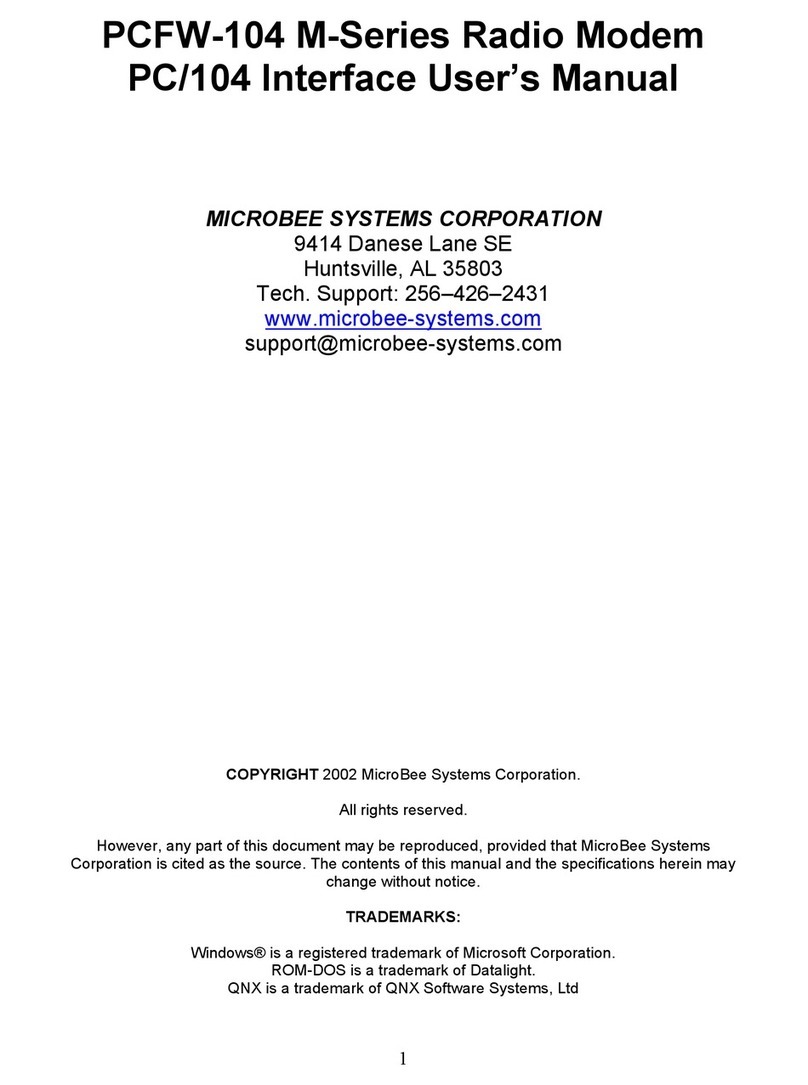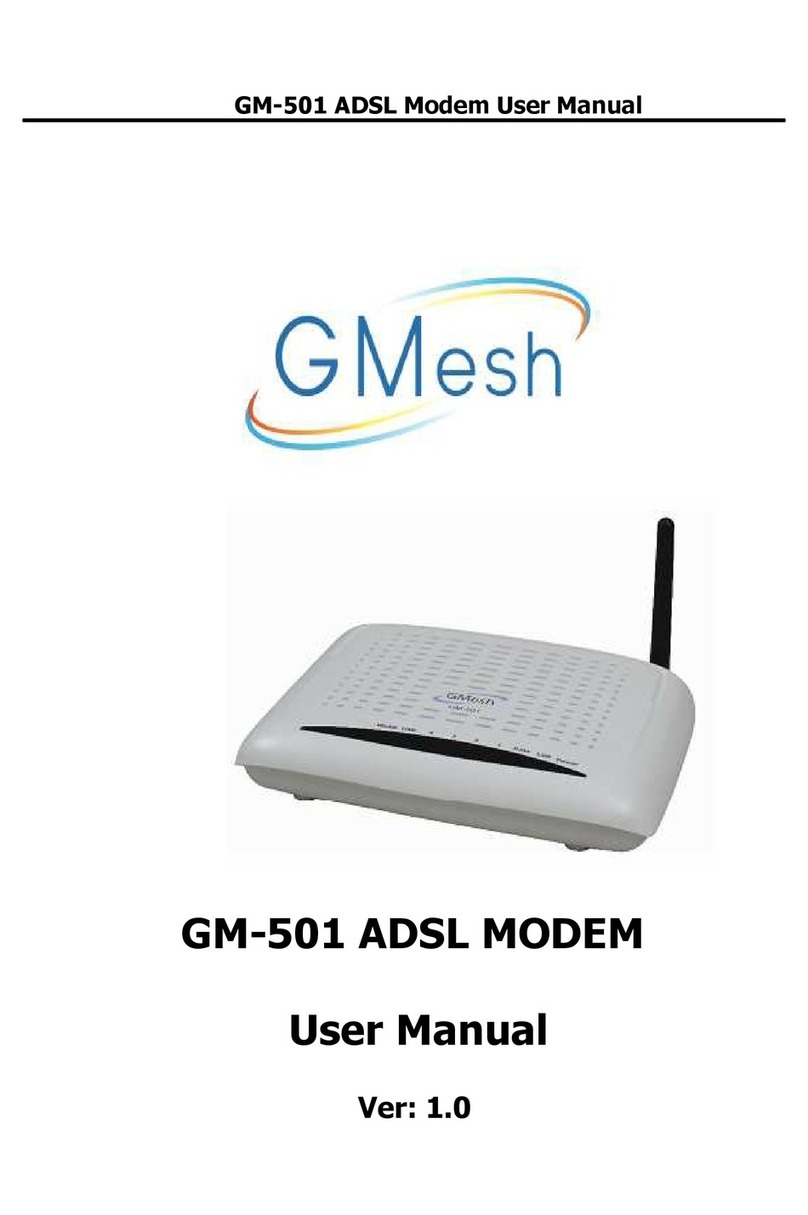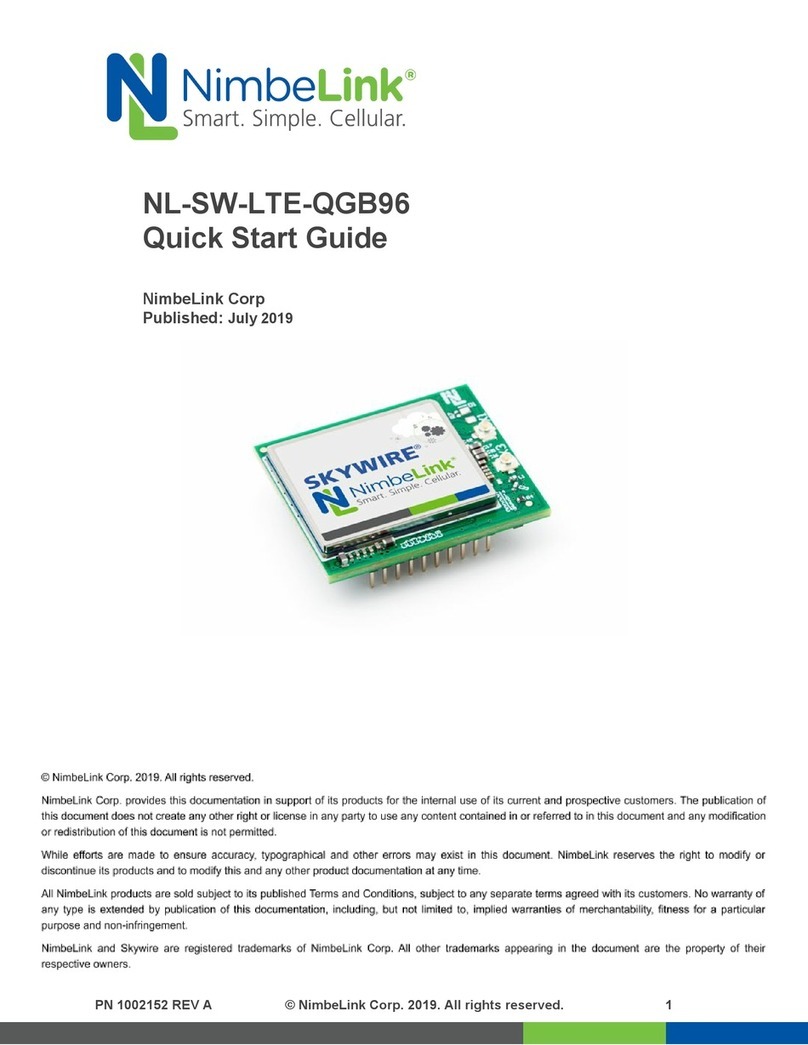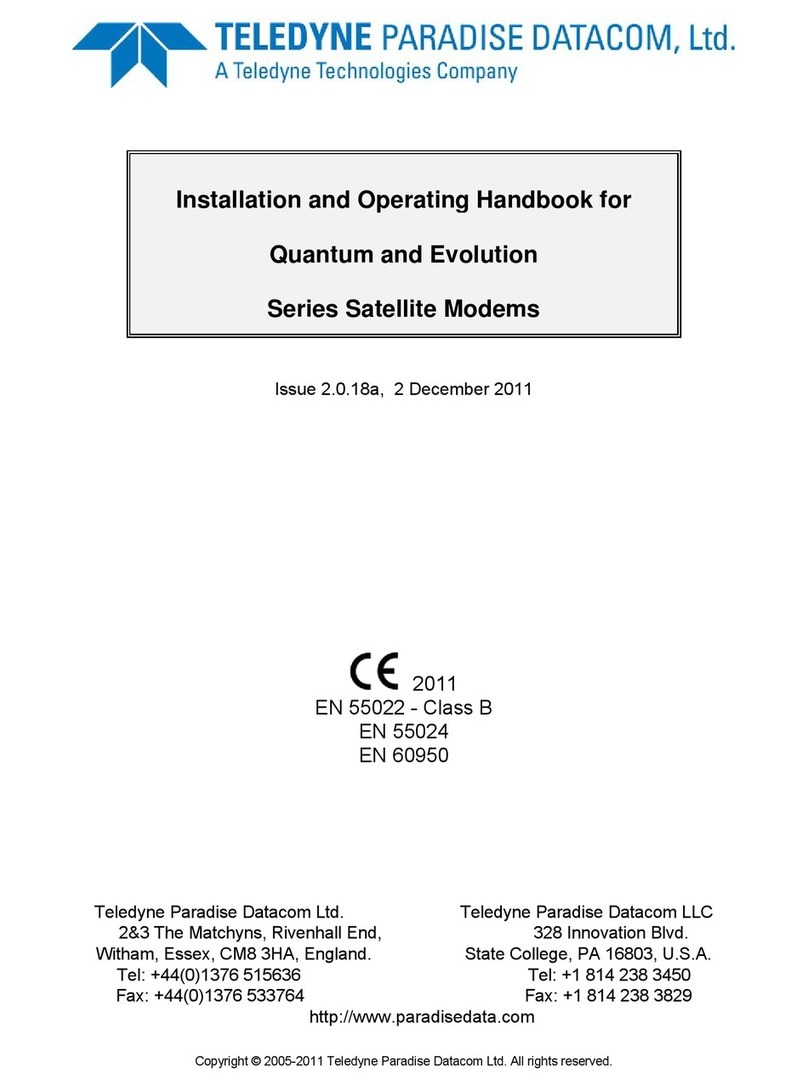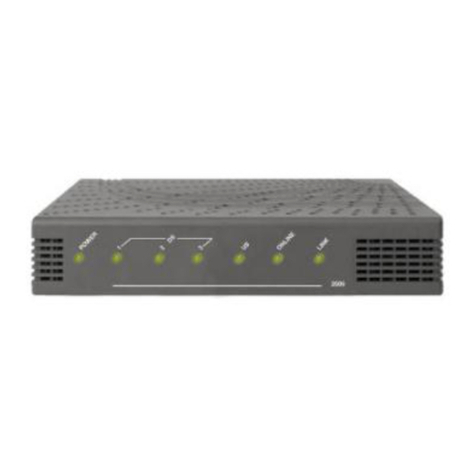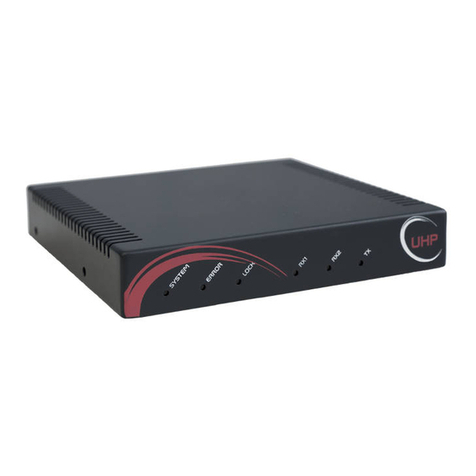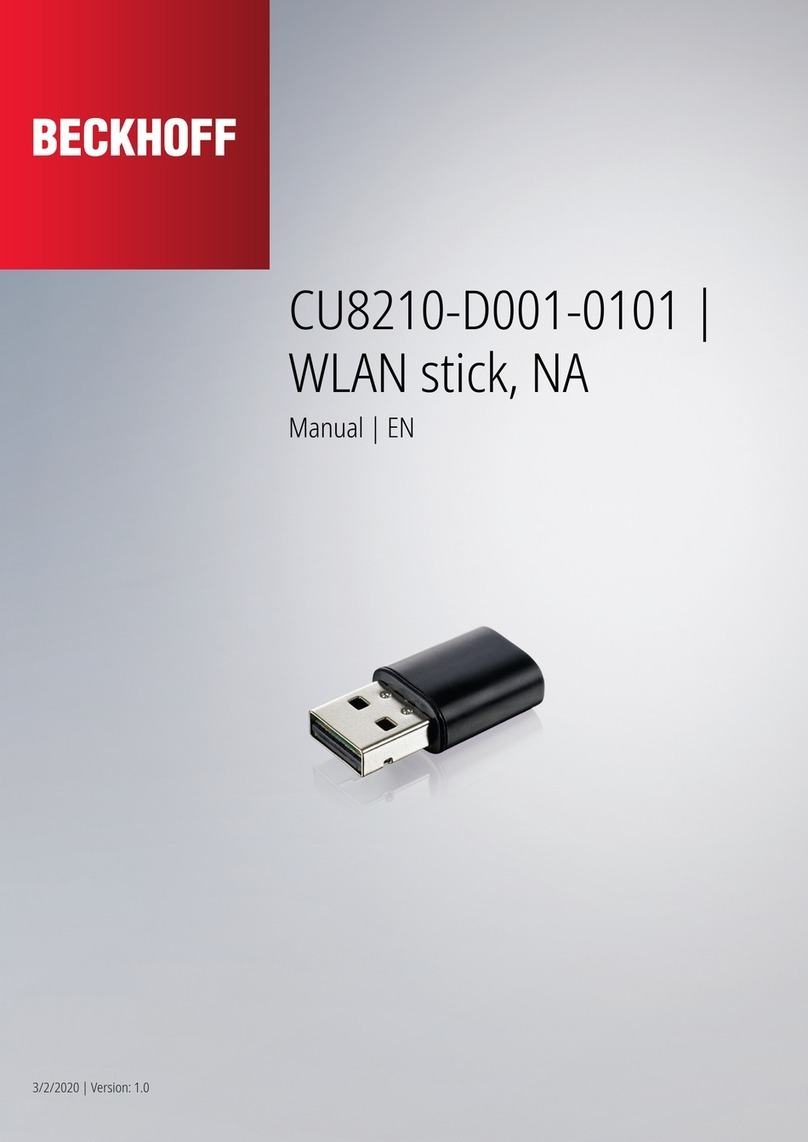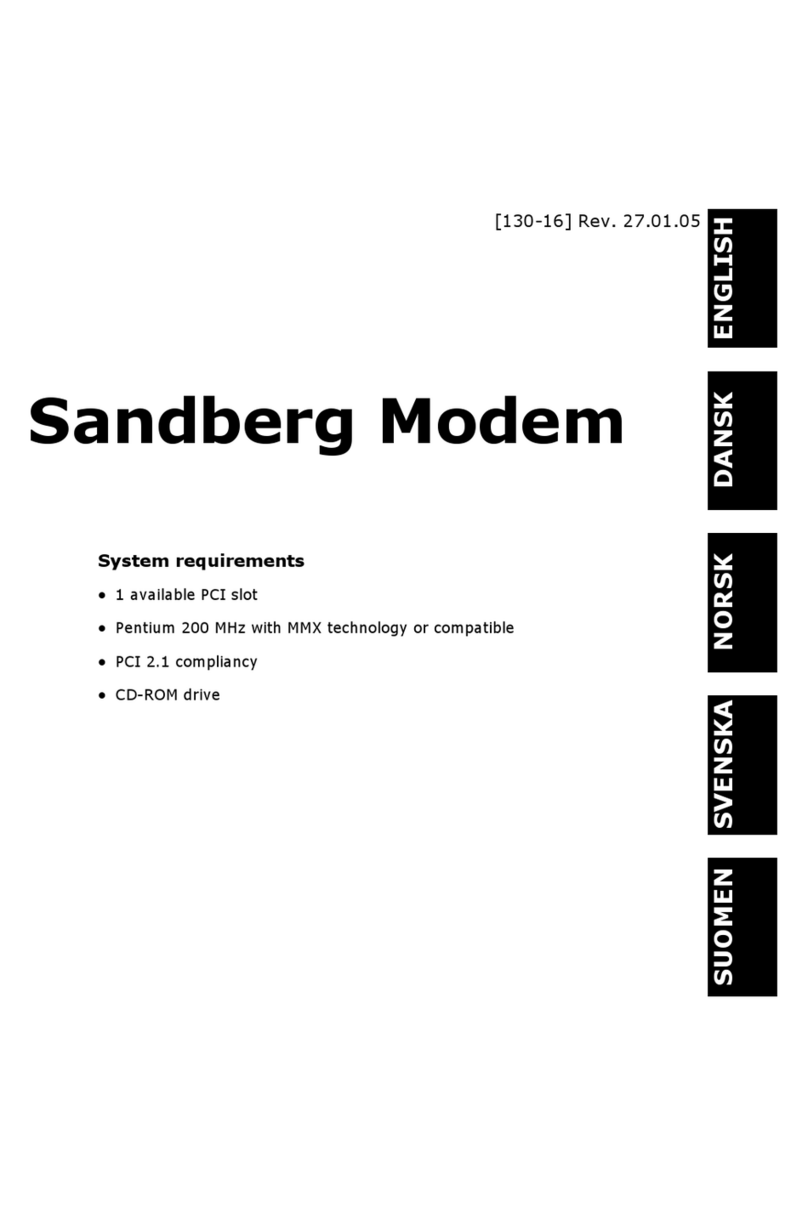Data Connect DSP19.2 User manual

DATA CONNECT ENTERPRISE
User’s Manual
For
DSP19.2 & DSP9612
Fast Poll Modem
Document Number 520-01001-101 Rev. A

Copyright © 2008 Data Connect Enterprise.
All Rights Reserved.
Web site: www.data-connect.com
The products and programs described in this User’s Manual are licensed products of Data connect
Enterprise. This User’s Manual contains proprietary information protected by copyright, and this
User’s Guide and all accompanying hardware and documentation are copyrighted.
Data Connect Enterprise. does not warrant that the product will work in all environments and
applications, and makes no warranty and representation, either implied or expressed, with respect to
the quality, performance, merchantability, or fitness for a particular purpose.
Information in this User’s Guide is subject to change without notice and does not represent a
commitment on the part of Data Connect Enterprise. Data Connect Enterprise. assumes no
responsibility for any inaccuracies that may be contained in this User’s Manual.
No part of this manual may be reproduced or transmitted in any form or by any means, electronic or
mechanical, including photocopying, recording, or information storage and retrieval systems, for any
purpose other than the purchaser's personal use, without the express written permission of Data
Connect Enterprise
DSP19.2 Fast Poll Modem User’s Manual
520-01001-101 Rev. A
December 2007

DATA CONNECT ENTERPRISE
iii User’s Manual - DSP19.2 Fast Poll Modem
Contents
Chapter 1 Introduction............................................................................................ 6
Features......................................................................................................................7
Applications.................................................................................................................8
Chapter 2 Installation.............................................................................................. 9
Unpacking Your Hardware..........................................................................................9
Additional Items You Need to Complete Your Installation...........................................9
Hardware Overview...................................................................................................10
Front View.................................................................................................................10
Back View..................................................................................................................10
Rack-Mount View......................................................................................................11
Installation Summary.................................................................................................11
Configuring the Modem.............................................................................................12
Setting the DIP Switches...........................................................................................14
S1-1, S1-2, S1-3 −Modem Data Rate.................................................................15
S1-4 −Async Character (Fast-Poll Mode Only) ..................................................15
S1-5 −Auto RTS .................................................................................................15
S1-6 −Transmit Carrier Control ..........................................................................15
S1-7 −2 or 4-Wire Operation ..............................................................................16
S1-8 −Transmitter Impedance............................................................................16
S1-9 −Remote Loopback Enable........................................................................16
S1-10 −Reserved (Test Only).............................................................................17
S2-1 through S2-3 −Transmit Level....................................................................17
S2-4 −Receiver Dynamic Range........................................................................17
S2-5 and S2-6 −Cable Equalizer (Fast-Poll Mode Only)....................................18
S2-7 −Anti-streaming..........................................................................................18
S2-10 −RTS-CTS Delay (Bell 202 Mode Only) ..................................................18
Configuring the Jumper Blocks .................................................................................19
For Stand-alone Units..........................................................................................19
For Rack-Mount Plug-in Modules........................................................................19
Connecting to a Transmission Line...........................................................................19
Connecting to a Voltage Source................................................................................21
Connecting to an RS-232 Device..............................................................................22
Connecting to an RS-485 Device..............................................................................22
LEDs..........................................................................................................................23
Loopback Control Switch...........................................................................................23

Contents
iv User’s Manual - DSP19.2 Fast Poll Modem
Appendix A Troubleshooting................................................................................ 25
Problem Solving........................................................................................................25
Appendix B Specifications ................................................................................... 26
General Specifications ..............................................................................................26
Mechanical Specifications.........................................................................................27
Interface Connector Pin Assignments.......................................................................27
RS-232 (DTE) Interface.............................................................................................28
RS-485 (DTE) Interface.............................................................................................28
Environmental Specifications....................................................................................28
Appendix C Limited Product Warranty................................................................ 29
Appendix D RMA Procedure................................................................................. 30

Contents
v User’s Manual - DSP19.2 Fast Poll Modem
Figures
Figure 1-1. Point-to-Point Network Using the DSP19.2FP Modem.........................................8
Figure 1-2. Multipoint Polling Network Using the DSP19.2FP Modem...................................8
Figure 2-1. Front View of the DSP19.2 Modem....................................................................10
Figure 2-2. Back View of DSP19.2 Modem...........................................................................10
Figure 2-3. Rack-Mount Module for the DSP19.2-RM Modem Board...................................11
Figure 2-4. DSP19.2 Fast-Poll Stand-alone Modem Board..................................................13
Figure 2-5. DSP19.2 Fast-Poll Rack-mount Modem Board ..................................................13
Figure 2-6. DSP19.2 Modem Transmission Line Interface...................................................20
Figure 2-7. Pin Locations on the Modem’s RJ-11C Jack......................................................22
Figure 2-8. Loopback Diagnostic Modes...............................................................................24
Figure 2-9. Back-to-Back Connection to a Second Modem..................................................27
Tables
Table 2-1. Modem Switch Settings .......................................................................................14
Table 2-2. Modem Operating Speed.....................................................................................15
Table 2-3. Transmit Levels....................................................................................................17
Table 2-4. Transmission Line Connector Pin Assignments ..................................................20
Table 2-5. RJ-11C Modular Jack Pin Assignments...............................................................22
Table 2-6. Modem LEDs.......................................................................................................23
Table A-1 Problem Solving ..................................................................................................25
Table B-1. Leased Line Terminal Block Pin Assignments ....................................................27
Table B-2. RS-232 (DTE) Interface.......................................................................................28
Table B-2. RS-485 (DTE) Interface.......................................................................................28

DATA CONNECT ENTERPRISE
6 User’s Manual - DSP19.2 Fast Poll Modem
Chapter 1
Introduction
Thank you for purchasing DCE’s DSP19.2 fast poll modem, the finest industrial-grade fast-
poll modem available.
The DCE modem is a 19200/9600/2400/1200 bps modem designed for 4-wire, full-duplex or
2-wire, half-duplex operation over a voice-band leased line or private line. The modem is
designed utilizing the latest digital-signal processing (DSP) technology to achieve high
performance. The modem employs efficient modulation and encoding scheme to achieve
fast modem training time. The modem is also backward compatible with Bell 202 and ITU-T
V.23 modems.
The DSP19.2 is the most technologically advanced modem on the market. Boasting a fast
DSP processor and automatic adaptive equalizer, the DSP19.2 modem is ideally suited for
multi-point communication systems that require fast response time, short training time, and
low throughput delay.
This User’s Guide describes the DSP19.2 (AC-powered) and DSP19.2-LV (DC-powered)
stand-alone modems, as well as the rack-mount DSP19.2-RM plug-in module for the
Motorola/UDS RM16M. This manual is designed to get your modem “up and running” as
quickly as possible. It contains all the information you need to configure and install your
modem. It also contains troubleshooting information in the unlikely event you encounter a
problem with your modem.

Introduction
7 User’s Manual - DSP19.2 Fast Poll Modem
Features
The DSP19.2 modem is specifically designed for harsh environments typically associated in
utility substations and industrial facilities. Though functionally similar to commercial modems,
the DSP19.2 provides the following unique features that make it well suited for utility and
industrial applications.
yPackaged in a rugged, compact enclosure for industrial applications.
yLeased-line interface protected with heavy-duty surge protection devices.
yBuilt-in hardware watchdog timer for software lock-up prevention without
requiring human intervention, making it ideal for unmanned locations.
yWorks within an extended temperature range of -40ºC to +85ºC.
yDesigned with coupling transformers for high-voltage isolation and common
mode noise rejection in industrial and commercial environments.
yOperate over voice-band conditioned or unconditioned leased-line and pilot
wires.
yAccepts power from a wide range of AC and DC power supplies:
– DSP19.2: 90 to 265 VAC or 100 to 400 VDC
– DSP19.2-LV: 10 to 60 VDC
– DSP19.2-RM: Plug-in module for the Motorola/UDS RM16M modem nest
yStandard industrial connectors for data, analog, and power interfaces allow
reliable interconnection to other industrial equipment.
yAsynchronous data rates (selectable) of 19200, 9600, 2400, and 0-1800 bps.
yEasily accessible DIP switches for user configuration and option selection.
yDB9-F connector for RS-232/V.24 interface, and RJ-11 for RS-485.
yLocal analog, local digital, and remote digital loopback diagnostics.

Introduction
8 User’s Manual - DSP19.2 Fast Poll Modem
Applications
The DSP19.2 modem is designed for point-to-point and multipoint data communications.
Figure 1-1 shows a typical point-to-point configuration using the DSP19.2 modem and
Figure 1-2 shows a typical multipoint configuration using the DSP19.2 modem.
Workstation Modem Modem
Remote Terminal
Figure 1-1. Point-to-Point Network Using the DSP19.2 Modem
Workstation Modem
Modem
Modem
Modem Modem
Modem
Remote Terminal
Remote Terminal
Figure 1-2. Multipoint Polling Network Using the DSP19.2 Modem
There are a number of factors that can affect the modem’s operation and performance.
These include:
yModem speed (i.e. bit error rate, transmission line distance)
y2-wire or 4-wire configuration
yTransmission line characteristics, noise, and line impairments
yNetwork configuration (point-to-point or multipoint)

DATA CONNECT ENTERPRISE
9 User’s Manual - DSP19.2 Fast Poll Modem
Chapter 2
Installation
This chapter describes how to configure and install the modem to maximize the performance
and to match with your Data Terminal Equipment (DTE) or Remote Terminal Unit (RTU).
Unpacking Your Hardware
Your package should include:
yAt least one of the following DSP19.2 modems:
– Model DSP19.2 for 90 to 265 VAC
– Model DSP19.2-LV for 10 to 60 VDC
– Model DSP19.2-RM for RM16M plug-in module
yA switching power supply module for 90-265VAC input (model DSP19.2 only)
yA leased-line cable with optional earth ground conductor (for stand-alone units
only)
yA DC power cable (model DSP19.2-LV modem only)
yThis User’s Manual or CD-ROM
If your package contents are damaged or missing, contact your place of purchase.
Additional Items You Need to Complete Your Installation
To complete your installation and operate your modem, you need these additional items:
yTwo- or four-wire transmission line or leased line
yA DB-9 data cable for your RS-232 interface Data Terminal Equipment (DTE)
port, or a RJ-11C data cable for your RS-485 DTE.
yPower supply that provides either:
– 90 to 265 Volts AC, 50 to 60 Hz, single phase or 100 to 400 VDC (if you have
the model DSP19.2 modem), or
– 10 to 60 Volts DC (if you have the model DSP19.2-LV modem)
– For the DSP19.2-RM, consult the documentation for your Motorola/UDS
RM16M

Installation
10 User’s Manual - DSP19.2 Fast Poll Modem
Hardware Overview
Front View
Figure 2-1 shows the front view of the DSP19.2 stand-alone modem. Starting from the left
side, this view shows:
yA set of eight LEDs for modem interface status (see Table 2-6 on page 23)
yA loopback control push-button switch (see Loopback Control Switch on page 23)
Figure 2-1. Front View of the DSP19.2 Modem
Back View
Figure 2-2 shows the back view of the DSP19.2 stand-alone modem. Starting from the left
side, this view shows:
yA 4-wire/2-wire configuration block labeled LEASED LINE
yAn RJ-11 modular jack labeled RS-485 for connecting the modem to an RS-485
RTU
yA female, 9-pin RS-232 connector labeled RS-232 for connecting the modem to a
standard DTE (RTU)
yA power connector labeled 10-48V DC
Figure 2-2. Back View of DSP19.2 Modem

Installation
11 User’s Manual - DSP19.2 Fast Poll Modem
Rack-Mount View
Figure 2-3 shows the rack-mount plug-in module.
Figure 2-3. Rack-Mount Module for the DSP19.2-RM Modem Board
Installation Summary
This section describes the steps for installing the modem.
NOTE: It is important to follow the steps below to configure the modem’s DIP
switches to match your DTE/RTU interface requirement and the transmission
line characteristics. If you are not certain about your system’s parameters or
the leased-line configuration, please contact your network administrator for
assistance.
1. Configure the modem using the DIP switches and jumpers. See pages 14 and
19.
2. Connect to a transmission line. See page 19.
3. Connect to a voltage source. See page 21.
4. Connect a DTE device. See page 22.

Installation
12 User’s Manual - DSP19.2 Fast Poll Modem
Configuring the Modem
You configure the modem using the two sets of DIP switches and two sets of configuration
jumpers on the printed circuit board of the modem labeled S1 and S2, JP1 and JP3.
Configuration DIP switches S1 and S2 for the stand-alone and rack-mount modems are
identical. Their descriptions in this user’s manual apply to both modem versions.
Configuration jumper JP1 for the rack-mount modem card is used to select receiver
termination impedance.
It is important to follow the steps described below, in the order shown, to ensure that you
configure your modem properly using the modem DIP switches:
1. Use DIP switch 1 (S1) to configure the modem for your host DTE interface and
network topology. Using S1, you select the modem’s operating speed to match
you host computer or RTU devices, and other DTE specific operating
parameters.
2. Use DIP switch 2 (S2) to select the modem’s transmitter output level and receiver
dynamic range specific leased line conditions. The S2 settings apply for both
high-speed fast-poll (QAM) and low-speed (FSK) modes.
3. After you change the DIP switch settings, recycle power to the modem to have
the settings take effect.
NOTE: The DIP switch settings will not take effect until you recycle power to the
modem.
To access the configuration DIP switches and jumpers on the stand-alone modem:
1. Ground yourself to discharge any ESD, which might cause damage to the
sensitive devices on the modem board.
2. Use a small Philips screw driver to remove the rear panel and carefully slide the
modem board out of the enclosure. The location of the DIP switches and jumpers
for the stand-alone modem are shown in Figure 2-4. For DIP switches and
jumpers on the rack-mount plug-in module, see Figure 2-5.
3. Carefully return the modem board into the enclosure. Then replace the rear panel
after the configuration is completed.

Installation
13 User’s Manual - DSP19.2 Fast Poll Modem
D17 D18 D19 D20 D21 D22 D23
J6
J1J2
J3
J4
J5
T2 T3
U8
GT3GT2
U10
S3
F1 F2 F3 F4
D24
11 10
JP1
110
110
S1
S2
Configuration Switches
S1 & S2
1
2
5
6RS232
RS485
3
1
JP3
600
Hi-Z
Configuration Jumpers
JP1 & JP3
JP2
Figure 2-4. DSP19.2 Fast-Poll Stand-alone Modem Board
J1
U19
T2
T1
U15
U5
GT2 GT1
S3
Y2
U18
U17
D11 D10
Y1
F1
F2
F3
F4
U15
U1
Data Rate 1
Data Rate 2
Data Rate 3
CharLength
Auto RTS
Tx Carrier
4W/2W
Tx Impedance
RDLB Disable
Factory only
TxLevel1
TxLevel2
TxLevel3
RcvRange
TxEqualizer
RxEqualizer
Anti-Stream
RTS-CTSDelay
Option1
Option2
D2 D1D3D4D5D6D7D8D9
U3
U8
U10
U6
U12
GT4 GT3
U2 U4
D27 D25
E1
E2
E3
J2
12
13 14
U7 U9
U22
U14
11 10 10
S1 S2
U21
31
JP1
600 ohmHigh-Z
Configuration Jumper
for Receiver Termination
Configuration DIP Switches
Figure 2-5. DSP19.2 Fast-Poll Rack-mount Modem Board

Installation
14 User’s Manual - DSP19.2 Fast Poll Modem
Setting the DIP Switches
S1 and S2 are 10-position DIP switches used to configure all the options and features of the
modem. Table 2-5 shows the setting of the switches.
NOTE: Switches S1 and S2 are toggle switches. To configure the switches, use a
small sharp pin to firmly press down on one end to open or to close each
switch. Never leave any switch in half open and half close. Press down on the
side of the switch labeled OPEN is referring to as OFF condition. When the
switch is CLOSED, it is in the ON state.
Table 2-1. Modem Switch Settings
Switch Settings
DIP Switches ON OFF (Default)
DIP Switch S1
S1-1 to S1-3: Modem Data Rate
19200: SW1=OFF, SW2=OFF, SW3=OFF
9600: SW1=ON, SW2=OFF, SW3=OFF
2400: SW1=OFF, SW2=ON, SW3=OFF
Bell 202T: SW1=OFF, SW2= OFF, SW3= ON
V.23: SW1=ON, SW2=ON, SW3=ON
S1-4: DTE Async Character 11 bit 10 bit
S1-5: Auto RTS Enable Disable
S1-6: Transmit Carrier Control Constant On Controlled by RTS
S1-7: 2- or 4-wire leased line 2-wire half duplex 4-wire full duplex
S1-8: Transmitter Impedance Controlled by RTS 600 ohms
S1-9: Remote Digital Loopback Enable Disable
S1-10: Test Only (Reserved) Test only Normal
DIP Switch S2
S2-1 to S2-3: Transmit Output Level From -12 to +3 dBm (see Table 2-5)
S2-4: Modem Receive Dynamic Range -10 to -43dBm +3 to -30dBm
S2-5: TX Cable Equalizer Enabled Disabled
S2-6: RX Cable Equalizer Enabled Disabled
S2-7: Anti-streaming Active Inactive
S2-8: RTS-CTS Delay (Bell 202T only) 33 msec 8 msec
NOTE: Switches S2-9 and S2-10 are for future options.

Installation
15 User’s Manual - DSP19.2 Fast Poll Modem
S1-1, S1-2, S1-3 −Modem Data Rate
yS1-1, S1-2, S1-3: Select the modem speed per Table 2-2
Table 2-2. Modem Operating Speed
To Select… Set Switch S1-1 to… Set Switch S1-2 to… Set Switch S1-3 to…
19,200 bps OFF OFF OFF
9600 bps ON OFF OFF
2400 bps OFF ON OFF
Bell 202T OFF OFF ON
V.23/1200 ON ON ON
For modem speeds of 2400 bps or higher, the modem uses QAM modulation automatically.
When the modem is operating at 1200 bps either in Bell202T or ITU-V.23 mode, the modem
uses FSK modulation.
S1-4 −Async Character (Fast-Poll Mode Only)
yS1-4 ON = 11 bits
yS1-4 OFF = 10 bits (default)
Switch S1-4 selects whether the async character is 10 or 11 bits long. This switch setting is
ignored when the modem uses FSK modulation.
S1-5 −Auto RTS
yS1-5 ON = Enable Auto RTS
yS1-5 OFF = Disable Auto RTS (default)
For data terminals that do not provide hardware Request To Send (RTS), set switch S1-5 to
ON to enable auto RTS mode. In this mode, TXD is detected at the modem and an internal
RTS signal is turned ON. After training completes, the TXD is transmitted to the remote
modem. The transmitter turns itself off if no TXD is detected after a pre-determined length of
idle time.
S1-6 −Transmit Carrier Control
yS1-6 ON = Constant carrier
yS1-6 OFF = Controlled by RTS (default)
Switch S1-6 selects either constant or switched carrier. Constant carrier allows DTEs, such
as asynchronous terminals or RTUs, to operate with modems, without requiring an input

Installation
16 User’s Manual - DSP19.2 Fast Poll Modem
RTS signal. If you enable constant carrier (switch S1-6 = ON), the modem forces the
transmit carrier active and the RTS-CTS delay is shortened to less than 0.5 ms.
You can use constant carrier in 4-wire point-to-point, or at the master unit of multi-point
network applications to reduce modem training time.
In switched-carrier mode (switch S1-6 = OFF), the RTS-CTS delay is 23 ms for 2400 bps
and above.
S1-7 −2 or 4-Wire Operation
yS1-7 ON = 2-Wire, Half-Duplex Mode
yS1-7 OFF = 4-Wire, Full-Duplex Mode (default)
Switch S1-7 configures the modem for either 4-wire full-duplex or 2-wire half-duplex
operation.
S1-8 −Transmitter Impedance
yS1-8 ON = Switched by RTS
yS1-8 OFF = 600 Ω(default)
Switch S1-8 is used for multi-point configuration networks. When multiple modems are
connected on the same metallic circuit:
yThe transmitter termination should be of high impedance if the modem is not
transmitting in order not put a load on the line.
yThe transmitter is only terminated with 600 ohms when RTS is asserted.
This configuration should be used for all slave modems to prevent the transmitting modem
from being unnecessarily burdened. To select this configuration, set switch S1-8 ON for the
slave modems.
If you use the modem with transmission lines that are transformer-coupled or with an
impedance-isolated network (such as a transformer bridge), set switch S1-8 OFF for proper
operation.
S1-9 −Remote Loopback Enable
yS1-9 ON = Loopback enabled
yS1-9 OFF = Loopback disabled (default)
During instances of channel noise, the modem may mistake a received preamble as a
request to go into remote digital loopback. Setting switch S1-9 to OFF prevents the modem

Installation
17 User’s Manual - DSP19.2 Fast Poll Modem
from participating in a remote digital loopback with another modem. Switch S1-9 does not
prevent the modem from sending a remote digital loopback request to a remote modem.
S1-10 −Reserved (Test Only)
yS1-10 = must be OFF
Switch S1-10 must be in the OFF position for normal operation. It is reserved for factory
testing only.
S2-1 through S2-3 −Transmit Level
Switches S2-1 through S2-3 adjust the modem’s transmit level. Table 2-5 shows the transmit
levels you can select using these switches.
Table 2-3. Transmit Levels
S2-1 through S2-3 Switch Settings
Transmit Level S2-1 S2-2 S2-3
0 dBm OFF OFF OFF
−2 dBm OFF OFF ON
−4 dBm OFF ON OFF
−6 dBm OFF ON ON
−8 dBm ON OFF OFF
−10 dBm ON OFF ON
−12 dBm ON ON OFF
+3 dBm ON ON ON
S2-4 −Receiver Dynamic Range
yS2-4 ON = −10 to −43 dBm
yS2-4 OFF = +3 to −30 dBm (default)
For short distances or to select a strong receive signal, set S2-4 to OFF. For a long-distance
cable or low receive signal level, set S2-4 to ON (−43 dBm).

Installation
18 User’s Manual - DSP19.2 Fast Poll Modem
S2-5 and S2-6 −Cable Equalizer (Fast-Poll Mode Only)
yS2-5 ON = Enable TX Cable Equalizer
S2-5 OFF = Disable TX Cable Equalizer (default)
yS2-6 ON = Enable RX Cable Equalizer
S2-6 OFF = Disable RX Cable Equalizer (default)
If you use the DSP19.2 as a limited-distance modem over pilot wire or unloaded cables, you
may need to improve or extend the modem’s polling performance on long transmission lines
by using the modem’s internal fixed Compromise Cable Equalizer when polling on long
metallic circuits. The cable equalizer is active only when the modem is in QAM fast-poll
mode (2400 bps or higher).
S2-7 −Anti-streaming
yS2-7 ON = Anti-streaming is active
S2-7 OFF = Anti-stream is inactive (default)
Typically, anti-streaming is used in multi-point applications to prevent a malfunctioning slave
data terminal or RTU from occupying the line indefinitely. When anti-streaming is active, the
modem can transmit data for a maximum of 27 seconds before the transmitter turns off
automatically. The modem then looks for an ON-to-OFF RTS transition before proceeding
with normal operation. Anti-streaming can be selected in either high-speed or low-speed
mode.
S2-10 −RTS-CTS Delay (Bell 202 Mode Only)
yS2-10 ON = 33.0 ms delay
yS2-10 OFF = 8.0 ms delay (default)
Switches S2-10 determines the duration of the RTS-CTS delay in Bell 202 mode.
For V.23 mode, the RTS-CTS delay is fixed at 33 ms.

Installation
19 User’s Manual - DSP19.2 Fast Poll Modem
Configuring the Jumper Blocks
For Stand-alone Units
Jumper block JP1 is use to select RS-232/V24 or RS-485 interface with your DTE or RTU.
•RS-232: Two shorting jumpers are placed over pins 1 & 3, and 2 & 4 (default)
•RS-485: Place two shorting jumpers over pins 3 & 5, and 4 & 6
Jumper block JP3 is used to set the modem’s receiver termination impedance
•600 ohms: A shorting jumper is placed over pins 2 & 3 (default)
•High impedance: Place a shorting jumper over pins 1 & 2
For Rack-Mount Plug-in Modules
Jumper block JP1 is used to set the modem’s receiver termination impedance
•600 ohms: A shorting jumper is placed over pin 2 & 3 (default)
•High impedance: A shorting jumper is placed over pin 1 & 2
Select high receiver impedance (Hi-Z) if multiple modems are connected in a multi-
point configuration but without an impedance matching bridged such as private
metallic circuit environment. In this configuration, only one receiver should be
configured for 600 ohms.
Connecting to a Transmission Line
The modem has a transmission line interface that can be configured for 2- or 4-wire analog
connection, where one pair (Tx-A and Tx-B) is used to transmit data and the other pair (Rx-A
and Rx-B) is used to receive data. The transmit pair and receive pair are non-polarized.
Table 2-4 shows the pin numbers and corresponding signals for the modem. Figure 2-6
shows the transmission line interface.
NOTE: For communication to occur, the Rx line of one modem must connect to the Tx
line of the other modem. The modem’s Tx/Rx pair are non-polarized.
NOTE: The modem does not support leased-line operation with DC shielding current.
Leased-line connector pin assignments for the rack-mount module can be
found in the documentation for your Motorola/UDS RM16M.

Installation
20 User’s Manual - DSP19.2 Fast Poll Modem
Table 2-4. Transmission Line Connector Pin Assignments
This Pin Number… Corresponds to This Signal…
1 Rx
2 Rx
3 Tx (Tx/Rx)
4 Tx (Tx/Rx)
5 Earth Ground (optional)
NOTE: When 2-wire half duplex is used, the TX pair must be used for both transmit
and receive.
Figure 2-6. DSP19.2 Modem Transmission Line Interface
This manual suits for next models
1
Table of contents
Other Data Connect Modem manuals
